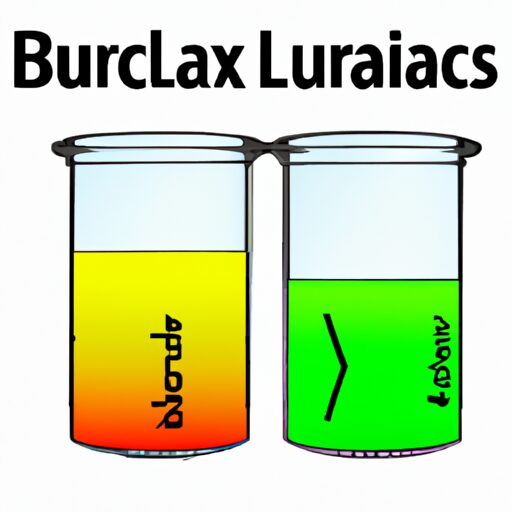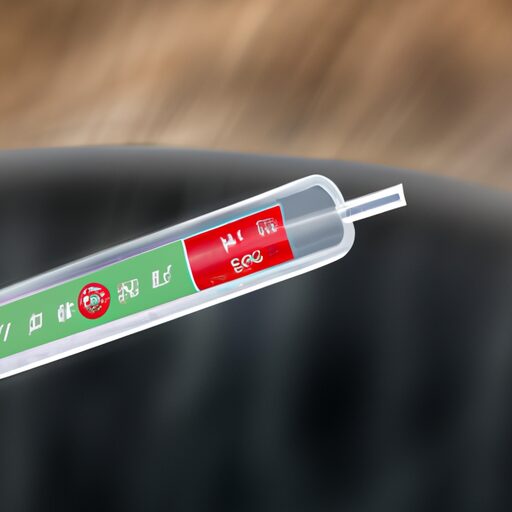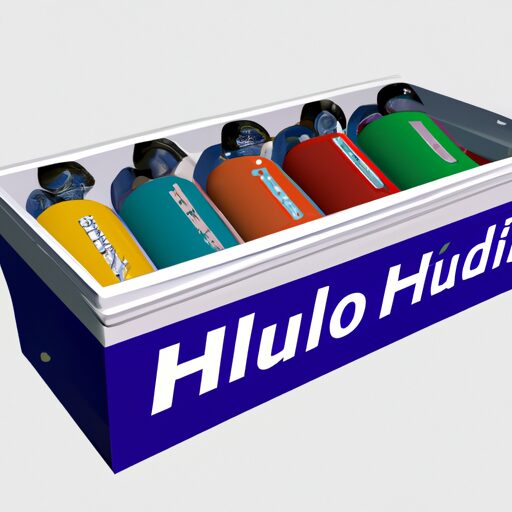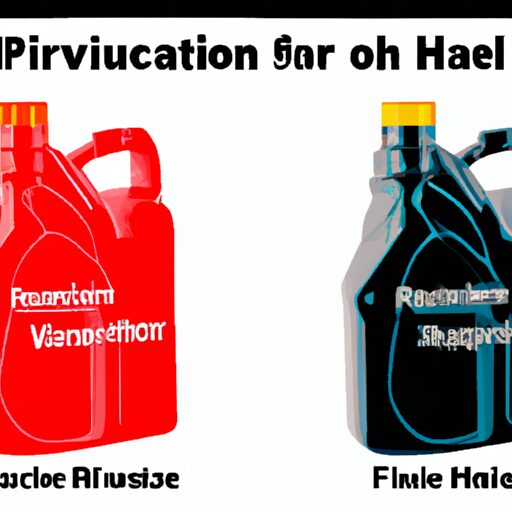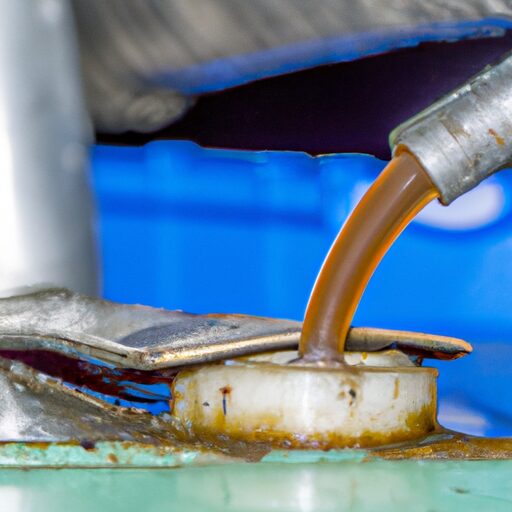Brake Fluid Vs Hydraulic Fluid
Brake fluid and hydraulic fluid are two essential components in the operation of various mechanical systems. Although they both serve a similar purpose, there are distinct differences between them that warrant further examination. This article aims to provide a comprehensive understanding of the disparities between brake fluid and hydraulic fluid by delving into their composition, performance variations, compatibility with systems, and the importance of regular maintenance. By examining these aspects in detail, readers will gain a thorough comprehension of the distinctions between these two fluids.
In terms of composition, brake fluid typically consists of glycol-based substances, whereas hydraulic fluid can be composed of various compounds such as mineral oil or synthetic materials. These compositional variances directly impact the overall performance characteristics exhibited by each type of fluid. Additionally, the compatibility with different systems plays a crucial role in determining which type of fluid should be used for specific applications. Regular maintenance is also imperative to ensure optimal performance and longevity of both brake and hydraulic systems. Overall, this article seeks to provide readers with an informed perspective on brake fluid versus hydraulic fluid to facilitate better decision-making regarding their usage in mechanical systems.
Understanding Brake Fluid
The understanding of brake fluid involves comprehending its role in the hydraulic system of a vehicle and its significance in ensuring proper braking performance. Brake fluid is a type of hydraulic fluid specifically formulated to meet the rigorous demands of a vehicle’s braking system. There are several different types of brake fluids available on the market, each with their own unique specifications and characteristics. These specifications are set by various industry standards organizations such as the Society of Automotive Engineers (SAE) and Department of Transportation (DOT). Brake fluid must meet specific requirements for boiling point, viscosity, corrosion resistance, and compatibility with rubber seals to ensure optimal performance.
One important aspect to consider when choosing brake fluid is its boiling point. The boiling point determines how effectively the brake fluid can withstand high temperatures without vaporizing or causing brake fade. Different types of vehicles may have different requirements for brake fluid specifications due to variations in operating conditions and braking systems.
In conclusion, understanding the different types and specifications of brake fluids is crucial for maintaining safe braking performance in a vehicle. It ensures that the appropriate brake fluid is selected based on factors such as boiling point and compatibility with rubber seals. With this understanding established, it becomes necessary to explore hydraulic fluid further, which plays an integral role in other aspects beyond just braking systems.
Exploring Hydraulic Fluid
Hydraulic fluid, also known as hydraulic oil, is a type of fluid that is used in hydraulic systems to transmit power. Its primary function is to transfer energy from one point to another within the system and provide lubrication for moving parts. Hydraulic fluid is commonly used in various applications such as automotive, construction, and aerospace industries due to its excellent properties of high viscosity index, thermal stability, and resistance to oxidation. There are different varieties of hydraulic fluids available, including mineral-based, synthetic-based, and bio-based fluids, each with specific characteristics suited for different operating conditions and equipment requirements.
Definition and Function
Brake fluid and hydraulic fluid serve distinct purposes in the operation of a vehicle’s braking system, with brake fluid acting as the lifeblood that enables efficient transmission of force to the brakes. Brake fluid is a type of hydraulic fluid specifically designed for use in automotive braking systems. It is a non-compressible substance that operates under high pressure to transfer force from the brake pedal to the wheels, allowing for effective stopping power. The primary function of brake fluid is to transmit and amplify force applied by the driver on the brake pedal, ensuring that the necessary pressure is exerted on the braking mechanism for optimal performance. While both brake fluid and hydraulic fluid share certain functional similarities, such as their ability to transfer force through fluids, it is important to note that brake fluid has specific properties tailored for its intended application in vehicle braking systems.
Moving forward into applications of hydraulic fluid, it is essential to understand how this versatile substance functions in various mechanisms.
Applications of Hydraulic Fluid
Applications for hydraulic fluid are diverse and widespread, playing a crucial role in various mechanical systems that rely on the power of pressurized fluids. Hydraulic fluid is used to transmit power, control mechanisms, and provide lubrication properties in these systems. One of the key functions of hydraulic fluid is to reduce friction between moving parts by providing lubrication. This helps prevent wear and tear, ensuring smooth operation and prolonging the life of the system components. Additionally, hydraulic fluid also serves as a corrosion prevention agent by creating a protective film on metal surfaces, preventing rust and other forms of corrosion. The table below illustrates some common applications where hydraulic fluid is utilized:
| Application | Description |
|---|---|
| Industrial Machinery | Used in various industrial equipment such as presses, lifts, and machine tools |
| Automotive Systems | Found in braking systems, suspension systems, and power steering systems |
| Aerospace Industry | Utilized in aircraft landing gear mechanisms and flight controls |
| Construction Equipment | Used in excavators, cranes, and loaders |
| Marine Applications | Found in ship steering systems and hydraulic winches |
These are just a few examples of how versatile hydraulic fluid can be in different industries. In the next section about ‘varieties of hydraulic fluid’, we will explore the different types available for specific applications.
Varieties of Hydraulic Fluid
One way to understand the different types of hydraulic fluid is by comparing them to various colors on a painter’s palette, each with its own unique properties and characteristics. Hydraulic fluids come in a variety of types, each formulated for specific applications and operating conditions. The most common types include mineral-based, synthetic, and water-based hydraulic fluids. Mineral-based fluids are widely used due to their affordability and good lubricating properties. Synthetic fluids offer superior resistance to high temperatures and oxidative degradation, making them suitable for demanding environments. Water-based fluids are environmentally friendly but may have limitations in terms of temperature range and corrosion protection. These different types of hydraulic fluid vary in their properties such as viscosity, heat resistance, oxidation stability, and compatibility with seals and components. Understanding these distinctions is crucial for selecting the appropriate fluid for a given application. Moving on to differences in composition…
Differences in Composition
Hydraulic fluid and brake fluid differ in their chemical composition, which plays a crucial role in their respective functions. The composition of hydraulic fluid typically consists of base oils and various additives that enhance its performance. On the other hand, brake fluid is usually composed of glycol-ether or silicone-based compounds.
To better understand the differences in composition between hydraulic and brake fluids, consider the following points:
-
Base Oils: Hydraulic fluids often contain mineral oil as a base oil, which provides lubrication and heat transfer properties. In contrast, brake fluids use synthetic ester oils or silicone-based compounds to ensure compatibility with rubber seals and prevent corrosion.
-
Additives: Hydraulic fluids incorporate additives such as anti-wear agents, rust inhibitors, and foam suppressants to improve their overall performance. Brake fluids also include corrosion inhibitors but prioritize high boiling points to withstand extreme temperatures encountered during braking.
-
Physical Properties: Hydraulic fluids have low compressibility to transmit force efficiently through hydraulic systems. Brake fluids have a high boiling point to resist vaporization under intense heat generated during braking operations.
-
Compatibility: While hydraulic fluids are interchangeable among different systems, brake fluids require specific formulations due to their critical role in ensuring reliable braking performance.
Understanding these differences in chemical composition between hydraulic and brake fluids sets the stage for exploring variations in their respective performances without compromising safety or system integrity.
Variations in Performance
This discussion will focus on the variations in performance between brake fluid and hydraulic fluid, specifically in terms of temperature range and stability, lubrication properties, and corrosion prevention. Temperature range and stability are important factors to consider as both fluids need to maintain their viscosity and functionality under extreme conditions. Lubrication properties differ between the two fluids, with brake fluid primarily serving as a hydraulic medium while also providing some level of lubrication, whereas hydraulic fluid is designed specifically for its lubricating properties. Lastly, corrosion prevention is another key difference between these fluids, with brake fluid typically containing additives to protect against rust and corrosion in the braking system, whereas hydraulic fluids may not have the same level of corrosion protection.
Temperature Range and Stability
Temperature range and stability is a crucial factor to consider when comparing brake fluid and hydraulic fluid, as it determines their ability to withstand extreme heat or cold conditions without compromising their performance or integrity. Brake fluid typically has a higher boiling point than hydraulic fluid, allowing it to maintain its functionality under high temperatures generated by the braking system. This is essential to prevent vapor lock, which can result in a loss of braking power. On the other hand, hydraulic fluid often exhibits better low-temperature properties, remaining effective even in freezing conditions. It is designed to resist thickening and provide smooth operation of hydraulic systems at low temperatures. The temperature range and stability characteristics of both fluids play a vital role in ensuring optimal performance and safety in various applications.
Moving on to the subsequent section about lubrication properties…
Lubrication Properties
The lubrication properties of brake fluid and hydraulic fluid are crucial for ensuring smooth operation and minimizing friction in various mechanical systems, enhancing their overall efficiency and longevity. Viscosity is a key factor that distinguishes these fluids. Brake fluid typically has a lower viscosity than hydraulic fluid, allowing it to flow more easily through the narrow passages of the braking system. This characteristic ensures effective transmission of force from the brake pedal to the brakes, resulting in reliable stopping power. On the other hand, hydraulic fluid generally has a higher viscosity to provide better lubrication and protection for hydraulic components such as pumps, valves, and cylinders. Additionally, both brake fluid and hydraulic fluid are susceptible to contamination by moisture or particulate matter, which can adversely affect their lubricating properties. Therefore, regular maintenance and monitoring are essential to prevent any detrimental effects on performance. Moving into the subsequent section on corrosion prevention…
Corrosion Prevention
One important aspect to consider when it comes to preventing corrosion is the implementation of effective protective coatings. These coatings act as a barrier between the metal surfaces and the corrosive elements in the environment, preventing direct contact and reducing the likelihood of corrosion. In the case of brake fluid and hydraulic fluid, corrosion prevention is crucial for maintaining system integrity and performance. Both fluids have different chemical compositions, which can affect their ability to prevent corrosion. Fluid compatibility with various materials used in brake systems and hydraulic systems is essential to avoid any detrimental reactions that could lead to corrosion. Compatibility testing ensures that the fluid will not cause any adverse effects on the system components, thereby minimizing the risk of corrosion. Understanding these factors helps in selecting an appropriate fluid that offers optimal corrosion prevention capabilities while being compatible with system materials.
Transitioning into the subsequent section about ‘compatibility with systems,’ it is vital to explore how brake fluid and hydraulic fluid interact with different components within these systems.
Compatibility with Systems
Brake fluid and hydraulic fluid must be compatible with the specific system they are used in to ensure optimal performance and prevent damage. Compatibility issues between fluids and systems can lead to potential risks, such as leaks, decreased braking efficiency, or even complete system failure. Therefore, it is crucial to select the appropriate fluid that meets the specifications recommended by the manufacturer.
Compatibility issues arise when incompatible fluids are mixed or when a different type of fluid is used than what is specified for the system. For example, using brake fluid in a hydraulic system designed for a different type of fluid can result in seal deterioration or damage to sensitive components due to differences in viscosity or chemical composition.
To avoid compatibility problems, it is essential to follow the manufacturer’s recommendations regarding which type of fluid should be used. Manufacturers conduct extensive testing to determine which fluids are best suited for their specific systems, taking into account factors such as temperature range, pressure requirements, and material compatibility.
Regular maintenance plays a vital role in ensuring continued compatibility between brake and hydraulic fluids and their respective systems. By regularly inspecting and replacing fluids according to manufacturer guidelines, potential compatibility issues can be identified early on and addressed before any significant damage occurs. Maintaining compatibility through regular maintenance helps optimize performance while minimizing potential risks associated with incompatible fluids.
Transition: Now that we have discussed the importance of maintaining compatibility between fluids and systems let us explore the significance of regular maintenance in more detail.
Importance of Regular Maintenance
Regular maintenance is crucial for ensuring the longevity and optimal performance of both brake and hydraulic systems, as it allows for early detection of potential issues and prevents costly damages. Neglecting regular maintenance can lead to decreased efficiency, increased wear and tear, and even system failure. Here are some key benefits of preventive care:
-
Early Detection: Regular maintenance enables technicians to identify minor issues before they escalate into major problems. This proactive approach helps prevent sudden breakdowns or accidents.
-
Cost Savings: Addressing small problems during routine maintenance is far more economical than dealing with extensive repairs or replacements caused by neglect. It also minimizes the risk of expensive downtime.
-
Enhanced Safety: Brake and hydraulic systems play a critical role in vehicle control. Regular maintenance ensures that these systems function optimally, promoting safe driving conditions for both the operator and other road users.
-
Extended Lifespan: Well-maintained systems tend to have a longer lifespan compared to those that are neglected. Routine inspections, fluid changes, and component replacements help preserve the integrity of these systems over time.
-
Manufacturer’s Warranty Compliance: Adhering to recommended service intervals ensures compliance with manufacturer warranties, providing peace of mind knowing that any unexpected failures will be covered.
In conclusion, understanding the importance of regular maintenance and reaping its benefits is essential for maintaining reliable brake and hydraulic systems.
Conclusion: Understanding the Distinctions
To conclude, comprehending the distinctions between brake systems and hydraulic systems is crucial for maintaining reliable and optimal performance in vehicle control mechanisms, despite potential objections that claim the two are inherently similar due to their shared reliance on fluid mechanics. Understanding these differences is of utmost importance as it allows for informed decision-making regarding maintenance and repair strategies.
One practical application of understanding these distinctions lies in the selection of suitable fluids for each system. Brake fluid, typically known as hydraulic fluid, is specifically designed to withstand high temperatures and pressures generated during braking. On the other hand, hydraulic fluid used in other parts of a vehicle’s hydraulic system serves different purposes such as power steering or suspension damping. Choosing an incorrect fluid can lead to reduced efficiency and potential damage to the system components.
In order to highlight the key differences between brake fluid and hydraulic fluid, consider the following table:
| Property | Brake Fluid | Hydraulic Fluid |
|---|---|---|
| Boiling Point | High | Varies depending on application |
| Purpose | Facilitate braking process | Power steering, suspension damping |
| Compatibility with Materials | Rubber seals | Various materials |
By understanding these distinctions, individuals can ensure proper maintenance practices are followed, reducing safety risks associated with brake failure or compromised performance in other hydraulic systems within a vehicle.
Frequently Asked Questions
Can brake fluid and hydraulic fluid be used interchangeably in a vehicle’s braking system?
Brake fluid and hydraulic fluid cannot be used interchangeably in a vehicle’s braking system due to their differing compositions. Brake fluid is specifically formulated to withstand high temperatures and provide optimal brake performance, while hydraulic fluid is designed for general use in hydraulic systems.
Are there any specific safety precautions to take when handling brake fluid or hydraulic fluid?
When handling brake fluid or hydraulic fluid, it is important to follow specific safety measures. This includes wearing protective gloves and eyewear, as well as ensuring proper storage in tightly sealed containers to prevent contamination and maintain its effectiveness.
How often should brake fluid or hydraulic fluid be replaced?
Brake fluid and hydraulic fluid should be replaced every 2 to 3 years or as recommended by the manufacturer. Regular replacement is necessary to maintain optimal performance and prevent brake system failure due to contamination or degradation of the fluid.
Can using the wrong type of fluid in a vehicle’s braking system cause damage?
Using the wrong brake fluid can have detrimental consequences. Brake fluid compatibility is crucial to ensure optimal performance and prevent damage to the braking system. Therefore, it is essential to use the correct type of fluid specified by the manufacturer.
Are there any aftermarket additives or treatments that can enhance the performance of brake fluid or hydraulic fluid?
Aftermarket additives and treatments are available for brake fluid and hydraulic fluid to enhance their performance. These products aim to improve the fluid’s boiling point, lubrication properties, and resistance to moisture, ultimately improving the overall efficiency and reliability of the braking system.
Conclusion
In conclusion, the disparities between brake fluid and hydraulic fluid are significant. These fluids, although sharing similarities in their function as hydraulic mediums, differ in composition and performance. Brake fluid is specifically designed to withstand high temperatures and maintain its viscosity, while hydraulic fluid comes in various formulations for specific applications. Regular maintenance of these fluids is crucial to ensure optimal performance and prevent system failures. Like a well-oiled machine, proper care of brake and hydraulic fluids keeps the gears turning smoothly and ensures the longevity of your hydraulic systems.

